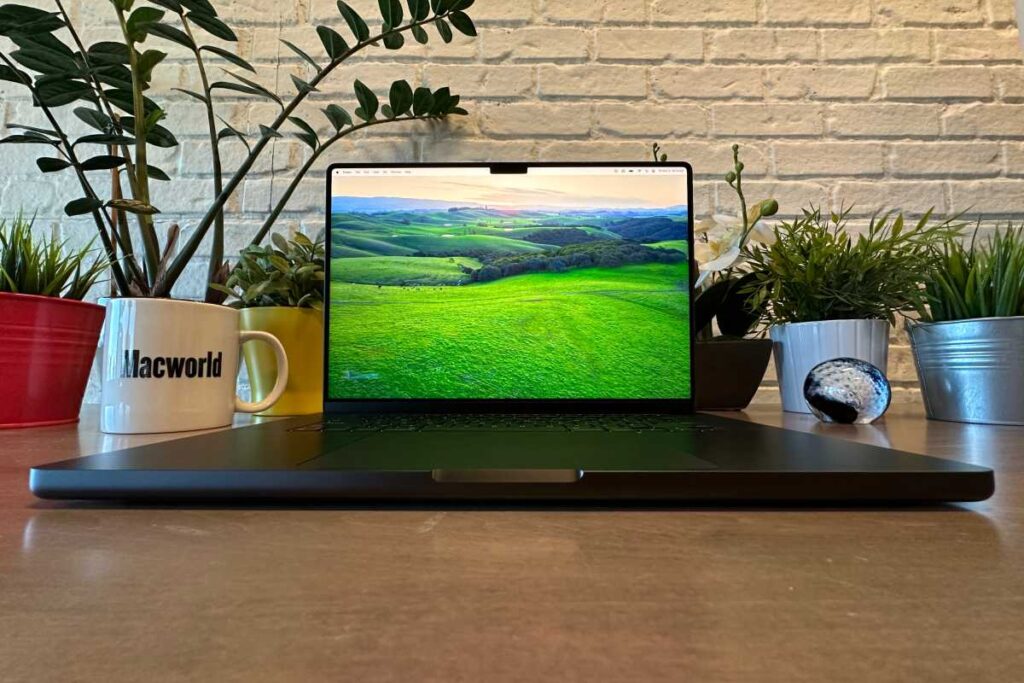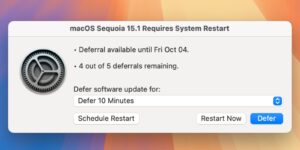Apple’s MacBook Pro memory problem is worse than ever

It should probably not be a controversial opinion that, in late 2023 (and surely through most of 2024), one should not sell a pricey “Pro” computer with only 8GB of RAM. And yet here we are.
The least-expensive new MacBook Pro you can get costs $1,599 and includes only 8GB of RAM, an insultingly miserly amount for this day and age. Want more? That will be at least $200, take it or leave it.
Apple has a long history of providing less RAM than it should for the price of its laptops and overcharging to get more, but it’s reached ridiculous proportions. The cheapest standard configuration with more than 8GB of RAM is 2 grand! The cheapest MacBook Pro you can configure with more than 8GB is $1,800!
Yes, you need more than 8GB
I will be the first chip nerd on the block to sing the praises of Apple’s M-series memory management. A big on-chip system-level cache and a fast SSD, along with some really smart code, means that a Mac with Apple Silicon doesn’t feel nearly as hamstrung with 8GB of RAM as, say, a Windows laptop.
That does not mean that 8GB is “enough,” though. Even relatively casual users who load up on browser tabs and inefficient Electron apps (household names like Slack, Teams, Discord, etc.) can find performance compromised by running out of RAM. Apple wants us to believe that things are different with the way its chips handle memory and 8GB in a MacBook is actually better than most Windows PCs with 16GB of RAM. That may be true, but 8GB is still far too little for a 2023 laptop.
Any MacBook with Pro branding should have a minimum of 16G of RAM.
Foundry
As I write this, with just a handful of browser tabs open, Slack, and a distraction-free writing app (iA Writer—it’s great), I’m consuming just about 11GB on my M2 MacBook Air.
Is it a problem to sell a Mac with 8GB in 2023-2024? No. Is it a problem to sell a MacBook Pro for $1,600 with only 8GB of RAM? Oh god, yes. If 8GB will be a bottleneck for many today, imagine the performance of that non-upgradeable laptop in a few years’ time. Don’t believe me? Vadim Yuryev of Max Tech ran a series of tests with two M3 MacBooks, one with 8GB of RAM and one with 16GB of RAM. The 16GB model saw significantly better results across the board, with a Final Cut render finishing four times quicker with the extra RAM.
Not that Windows laptops and Macs are directly comparable, but comparably-priced Microsoft Surface, HP Envy, Alienware, Dell XP, and Lenovo Thinkpad laptops all have 16GB of RAM or more, standard. You can spend all day mired in laptop configurations (and I have) but the bottom line is this: 16GB is standard at prices over $1,000 even in laptops with premium displays and other high-end features. Apple is way off base with its RAM here, more so than usual, especially in products that carry the “Pro” name.
The upgrade extortion
If you want more than 8GB, you have to pay for it. Either with a big $400 upgrade to the M3 Pro—which is not even an option in the just-released M3 iMac—or by paying Apple $200 for another 8GB.
To be clear, 8GB of LPDDR5-6400 (the RAM used in these products) costs Apple a tiny fraction of that amount. Nobody knows precisely what Apple pays its suppliers, but the going price for 64Gbits (8GB) of that sort of RAM is less than $40 in quantity. Apple’s deal likely has them paying $30 or less.
The M3 MacBook Pro has a great screen and a nice selection of ports—but 8GB of RAM is a joke.
Foundry
There’s nothing special about Apple’s RAM. It’s high quality, and it’s integrated on a very wide memory bus very close to the M3 chip, but those manufacturing complexities don’t make the RAM cost more. Apple’s charging you $200 for RAM it buys for $30.
Here’s a fun experiment: Configure a MacBook Pro with the M3 Max, the full 16-core CPU version. Every additional 16GB of RAM costs $200, the same as 8GB of RAM on the lower configurations.
Any time an upgrade carries a perfectly round price–exactly $200–you should be wary of it. Some product manager priced it by what “looks good” and what they think customers will pay.
In Apple’s case, you have no choice. You can’t upgrade later. You can’t pay anyone else’s price. You have to pay Apple’s exorbitant $200-for-8GB upgrade cost. Make no mistake: the true starting cost of a M3 MacBook Pro is $1,699 because to buy one with only 8GB of RAM is crazy.
We shouldn’t accept this
Are the new M3 Macs great computers? Sure. Are they expensive? You betcha. Does any excuse for Apple’s stingy 8GB RAM configurations or highway-robbery RAM upgrade prices? Absolutely not. This is pure corporate greed from the world’s biggest and richest technology company, and as Apple customers, we shouldn’t stand for it.
MacBook



